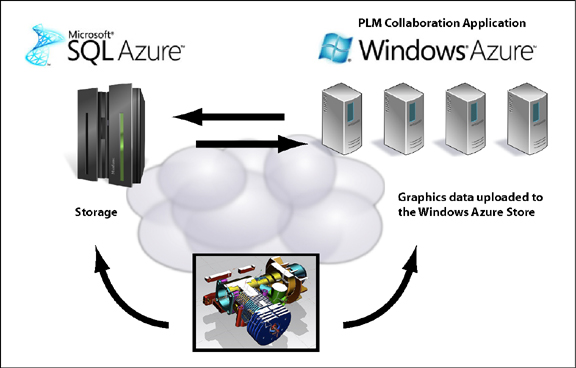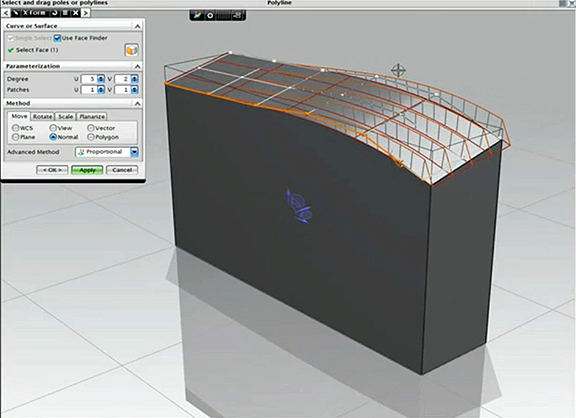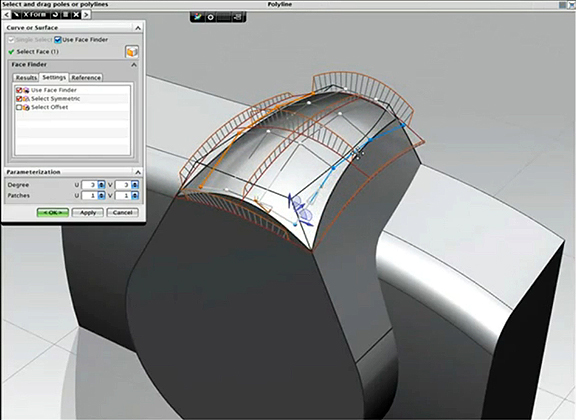Siemens PLM Connection 2010: Clouds Develop, Freeforms Beckon
July 1, 2010



Stepping up to the podium at Siemens PLM Connection 2010, Don Richardson from Microsoft‘s Platform and Solutions Group knew he was tackling a controversial topic. Accordingly, he tried some humorous openers. “What is cloud computing? It’s not a computer in the cloud,” he warned. “For those of you who travel a lot, it’s not working on your computer on a plane, even though you might like to think that.”
The cloud, very simply, is “just a large data center,” he noted. “It’s great to talk about the cloud, but behind the cloud is a lot of hardware.” When connected to computing devices everywhere—netbooks on planes, iPads in cafes, and PCs in people’s homes—the remote computing data center becomes a metaphorical cloud, with more horsepower and storage capacity than each individual device.
Cloud as a Platform Most people are familiar with—and already working in—what Richardson described as “on-premise cloud” (data center housed in the same company where you work) and “hosted software,” but “the idea of cloud as a platform is a bit more abstract,” noted Richardson.
“Today, you have operating systems (OS) on PCs,” he said. “Think about an OS in the cloud—that’s what we’re building.”
So what can you run with that OS in the cloud? A PLM system, for one. In the prototype setup demonstrated by Richardson, Siemens’ Teamcenter is deployed on Microsoft SQL Server, connected to users via SharePoint, and connected to ERP data housed in Microsoft Dynamics.
So what if you need to work with someone outside this company-sanctioned PLM cloud? Richardson’s proposal is to use “the cloud as a secure extranet”—upload a JT (lightweight 3D format) assembly into the cloud, then assign a unique ID to each user. In theory, this setup allows you to give different recipients access to separate portions of the assembly file.
The setup may work flawlessly in theory, but in practice, Richardson’s demo was hampered by pesky wireless connection—an unfortunate side-effect of the overcrowded cloud that governs the conference room’s digital traffic.
Freeform with X-Form Having pushed the limit of mechanical CAD modeling with Synchronous Technology (current in its second incarnation), NX now dives into freeform surfacing and solid modeling. In NX7, Synchronous Technology’s geometric-relationship recognition (known as Live Rules) remains in place, so you can choose to apply symmetrical edits or suspend the rules. The control-point deformation method used in NX is similar to how you might build shapes in Autodesk Alias and other freeform modelers. (For more on Autodesk’s initiative to combine its MCAD modeler Inventor with its freeform modeler Alias, read “Curves Ahead!” April 15.)
Freeform sculpting is a necessity for stylized product designers like Black Diamond Equipment, a climbing and skiing supply manufacturer and a presenter at the conference. As organic shapes become a typical feature in consumer products, more CAD software makers will be pressured to add such deformation tools.
Though the download and display of sub-assembly files were interrupted during Richardson’s demo, his joke (“I’m offering free drop-tests of iPads from my 38th floor hotel room.”) sailed into Twitter-sphere in no time, proving that cloud computing does work—you just need a good sense of humor to cope with its unpredictability.
Note: Siemens has not issued any official statement on its plan for cloud-hosted PLM. The freeform modeling functions slated for NX7 are not expected to appear in Solid Edge, the company’s mid-range CAD program in the Velocity Series.
For more on NX7’s freeform tools, watch Siemens PLM Software’s video demonstration below:
Subscribe to our FREE magazine, FREE email newsletters or both!
About the Author
Kenneth Wong is Digital Engineering’s resident blogger and senior editor. Email him at [email protected] or share your thoughts on this article at digitaleng.news/facebook.
Follow DE





